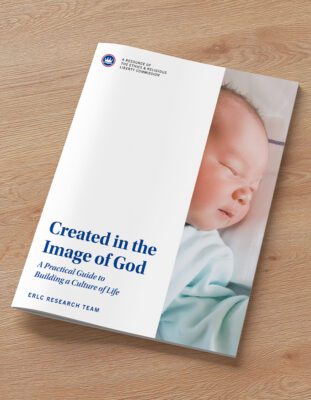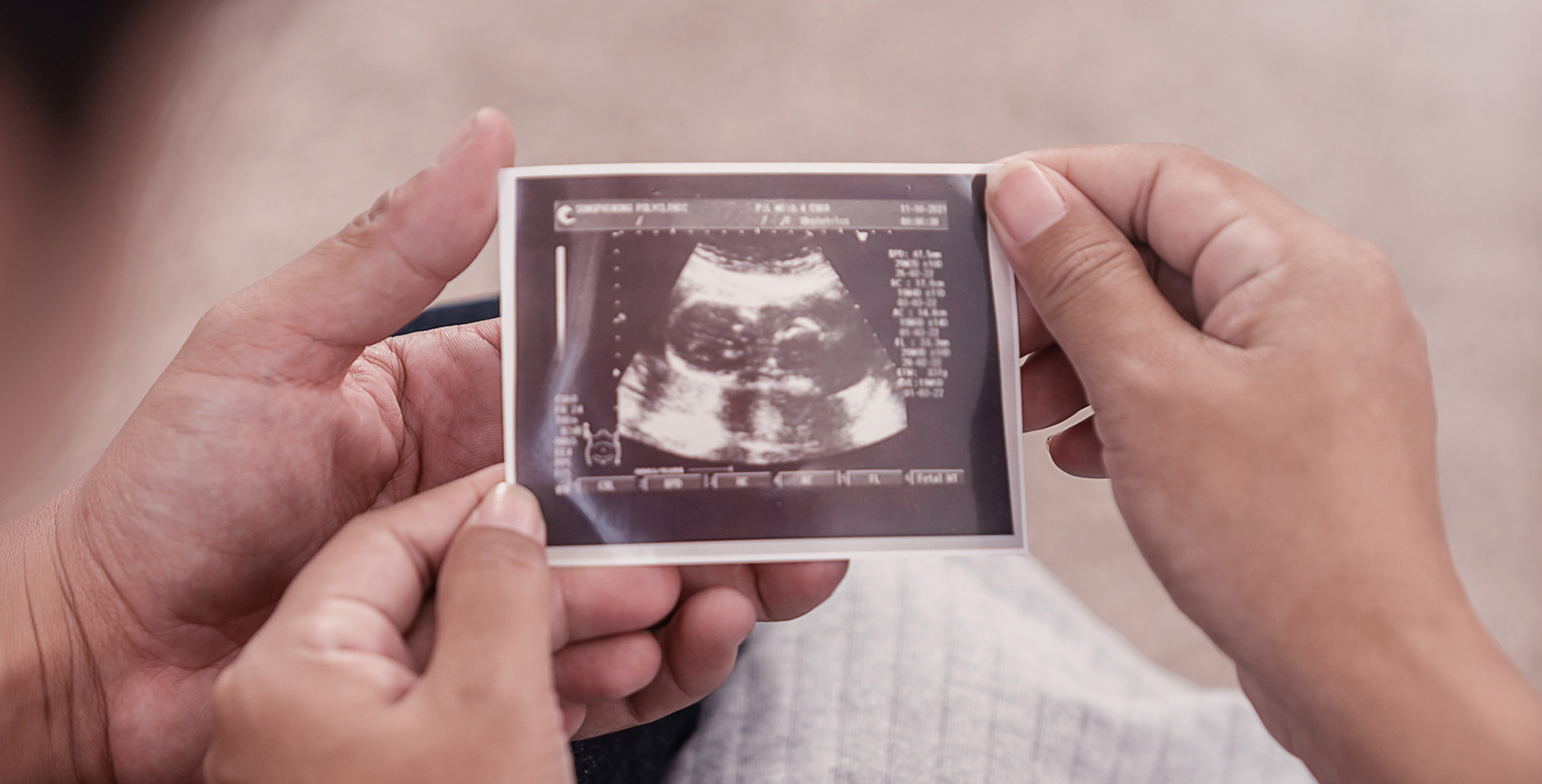Not many weeks ago news emerged that Modern Family actress Sophia Vergara is embroiled in a legal battle with her ex-fiancé over possession of the couple’s two frozen embryos. The father is seeking “possession” of the embryos to prevent their destruction. He cannot take “custody” unless the court rules that the embryos are “daughters” eligible for custody, as he claims they are. In a defeating wrinkle, however, Mr. Loeb seems to have contracted with Ms. Vergara to limit what can be done with the embryos without the written consent of both parties. Mr. Loeb asks for the contract to be nullified, naturally, whereas Ms. Vergara believes, in her attorney’s words, “embryos are not children” and thus the contract stands.[1] The irony of this case escapes no one. Here we have a cast member of Modern Family in litigation to halt the artificial making of her own modern family.
Tragicomic as this episode may seem, a multitude of similar cases exacerbated by reproductive technologies are adjudicated legally across the county at any given time that are only and unironically tragic. What goes by the name “surrogacy” has until very recently lingered along the periphery of public consciousness. The practice is the subject of passing remarks among the affluent, particularly the celebrity class, as though it were something that that folks “just do” from time to time, arbitrary as wintering in Vale. The flippancy with which surrogacy is often treated, however, often conceals its deeply troubling moral and social implications. Here I offer a brief account of what surrogacy involves, who it affects, and then conclude by identifying several of the moral challenges it poses to contemporary understandings of family and parentage.
In its most basic formulation surrogacy describes a contractual agreement between “parents” of a child and the gestational (or carrying) “mother.” The typical case looks something like this: a couple who either cannot conceive or who do not wish to conceive themselves find and contract with a young woman willing to carry “their” child to term and upon delivery yield it immediately to the contracted “parents.” The reasons for contracting are numerous and complex, as we’ll see. In truth, however, as many as six different parties could be involved in a surrogacy contract: a donating “mother,” donating “father,” carrying mother, adoptive mother, adoptive father, and the child (or children). Complicated doesn’t quite begin to describe it.
Surrogacy is made possible by reliance upon highly sophisticated reproductive technologies associated with in vitro fertilization. The practice of IVF, in which a mother’s egg is extracted from her ovary, fertilized artificially (i.e., with precision instruments in a laboratory) with the father’s sperm and deposited into the mother’s womb is, shall we say, pregnant with moral complications. Typically, an excess number of eggs are extracted and fertilized unless the parents specifically impose limitations. This means, of course, that “unused” embryos are either kept frozen (at great cost) or are destroyed. Sadly, these “destructions” pale in comparison to the number of embryos destroyed in the course of refining IVF techniques over the past four decades. In any event, here the essential point is simply that IVF technologies make surrogacy possible.
Technologies making IVF itself possible also make possible genetic manipulation. If you haven’t heard much about this feat of medical engineering, you soon will. A lot. Its promise will take the initial guise of preventative medicine, to cancel out the possibility of inheriting genetic diseases like Alzheimer’s or Down’s syndrome. In other words, the goal is to engineer certain afflictions out of the human race entirely. Technologies associated with IVF promise molecular management of the species. Parents may one day have the option to gene-select a child’s skin pigmentation, eye color, stature, athletic prowess, or even intellectual aptitude. Why procreate naturally, ask medical engineers, when you can have the child you most want? Designer babies are perhaps but a few years away. When it finally arrives it will come hidden behind the promise to overcome the Human Condition, as the ethicist Paul Ramsey many decades ago anticipated it might.
So, how does one become a surrogate? Who helps facilitate the contract agreement between parties? Are there provisions applying to the kind of child that will be born? And what about the standard surrogate seeker, how does one even go about finding a surrogate? Consider a few cases:
A young female college student, let us call her Sally, discovers that the generous compensation package for serving as a surrogate would help pay for her college degree and so elects to enter into contract with a couple from New England. She must uphold all the provisions of the contract: maintain healthy diet and exercise, avoid consumption of harmful substances, and keep weekly visitations to her OB. Sally keeps her side of the bargain, and then some. But at about the seven-month mark she becomes plagued with doubt. With each passing week she is increasingly convinced that this is her child developing inside her and thus eventually becomes resolute: she simply will not give the baby up when it is delivered.
An impoverished recruit from the Yucatan peninsula, Maria, is matched with a couple seeking a surrogate. She will make more carrying this child to term than she could make in five years of full time labor. Like Sally, she must uphold all the contract stipulations to the fullest, and she does. But at month eight she is notified that the contracting couple has suddenly separated and according to contract the pregnancy must be terminated immediately. Maria is Catholic and did not imagine this couple would ever ask her to terminate the fetus. She finds herself at a personal impasse.
Although these two narratives are fictitious, cases similar to them—many far more horrifying—are recurrent and transnational. And I do mean transnational. Recruiters (or “handlers”) for law firms facilitating surrogacy contracts are stationed in countries across Southeast Asia, Africa, Eastern Europe, and Central America. Naturally these recruiters target poor or disenfranchised women. Once signed, the surrogates are more or less trapped; most (if not all) contracts protect the “parent(s)” and provide very few protections for the surrogate. No surrogate may abort a child at will without significant financial penalty. For the nine-month gestation period the surrogate is bound to satisfy all the parents’ wishes.
Surrogacy law lags far behind the practice. Only six states have statutes banning or voiding surrogacy contracts altogether. All other states regulate only loosely, adjusting applicable rules as unique cases arise. The state of Oklahoma, for example, only prohibits the “trafficking of children.” Legality thus depends entirely on how the arrangement is framed—couples must seek to “adopt,” not “purchase,” a child. Surrogacy laws across the country are surprisingly lax.
As you have already begun to detect, there is a deeply troubling moral underside to surrogacy. First, surrogacy contracts exploit the poor to benefit those in positions of power and advantage. It does not matter here that the surrogate enters the contract “freely.” Were she not poor she would not feel forced to enter a tilted contract in the first place. She is not the legal “possessor” of the child, so if the “parents” request termination, she is powerless to resist. Which raises the second point: surrogacy amounts to womb rental. This phrasing may sound overly crass, but it is the most fitting description of what the contract establishes; the mother is agreeing temporarily to rent out her womb for compensation. And with this a third problem: many, many women who do not anticipate developing an affectionate bond with the child during its gestation do in fact come to hold rather visceral bonds with the child. So here we have a “mother” who brings a child without her own genetic material into the world feeling tangibly bound to it, even to the point of loving and adoring it. Why? Because in utero the “new-one” and the mother experience one another in powerful ways.[2] Forming such a natural bond is precisely how God designed it and thus entirely unavoidable. Surrogates very often do not anticipate coming to love the life they help bring into the world, and so it comes as no surprise that a significant number of these young women put up a tremendous legal fight to retain custody of the children they contracted to give up. Can a surrogate “care” for her developing baby with only her head and without her heart, to simply do her contractual duty, dispassionate to the new-one drawing upon her very life and breath? The answer clearly is No, and indeed she shouldn’t have to.
In its current form surrogacy abolishes vital distinctions of parental progeny and drains pregnancy itself of meaning. Theologically, parentage is not established by chromosome or contract, but by corporeal care. My two sons happen to be of my biological progeny, but they are my sons because I father them. Surrogacy necessarily blurs these distinctions. Scripture likewise refers to the womb in almost sacred terms; it is a site for the indescribably magical, a place of human becoming. The prospect of commodifying the womb is wholly unthinkable, and not because it is scientifically “backwards,” but because the womb is a nest of care and nurture—the earliest locus of mothering. The womb is where mother and child first come to know one another in ways that surpass knowledge. No matter how detailed or clairvoyant, surrogacy contracts cannot adequately anticipate future changes of heart, either for the parents or surrogates, and thus must ignore how bonds of affection may deepen or wither.
Surrogacy legitimates itself as a practice only by ignoring the often troubling and disastrous repercussions it carries for women and children.
[1] It is unknown whether Vergara and Loeb intended to use a surrogate for their embryos.
[2] For more on this experiential relationship between mother and child I refer you to James Mumford’s very excellent book Ethics at the Beginning of Life (OUP, 2013). The happy neologism “new-one” is especially helpful.
Matthew Arbo
Matthew Arbo is Assistant Professor of Biblical and Theological Studies at Oklahoma Baptist University.










